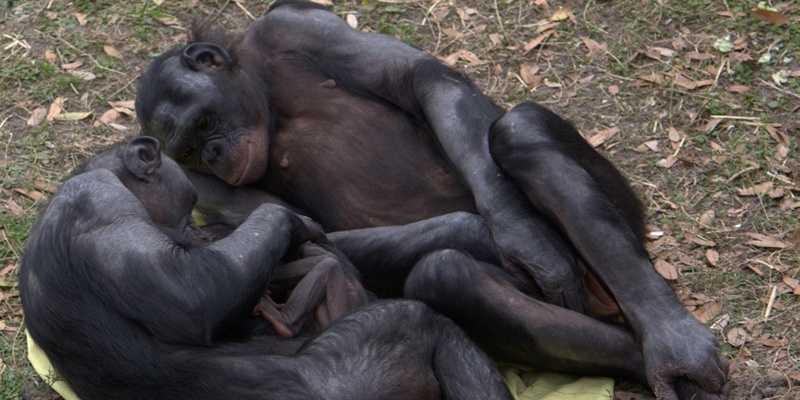Man’s closest primate relative has been found to indulge in bisexual relationships and scream louder when mating with a high-ranking member of their group.
Bonobos, a sister species of chimpanzees, are already known to use sex for social as well as reproductive purposes. A new study by researchers at St Andrews University also suggests that females of the species produce copulation calls as a way off showing off high-powered relationships.
Psychologists who were studying vocal communication in apes observed female primates mating with males and other females. Researcher Zanna Clay explained, “During mating events females of many primate species produce loud and distinct vocalisations known as copulation calls, which are considered to promote the caller’s reproductive success.
“Female bonobos are unusual amongst the non-human apes in terms of their heightened socio-sexuality. We found that female bonobos engaged in frequent sexual interactions with both males and other females, while producing copulation calls in both contexts.
“However, during same-sex mating calls were always given by the lower-ranking partner, while the likelihood of calling increased with the partner’s rank, regardless of the partner’s gender. Our results highlight the social significance of sex in this species and suggest that copulation calls in bonobos have undergone an evolutionary transition from a purely reproductive function to a more general social function.
“Like humans, sex among bonobos is not only used for reproduction, but it is also important in friendships and bonding, and keeping close to those in power.”
Results of the study are published in science journal Biology Letters.
Photo by Flickr user LaggedOnUser.
